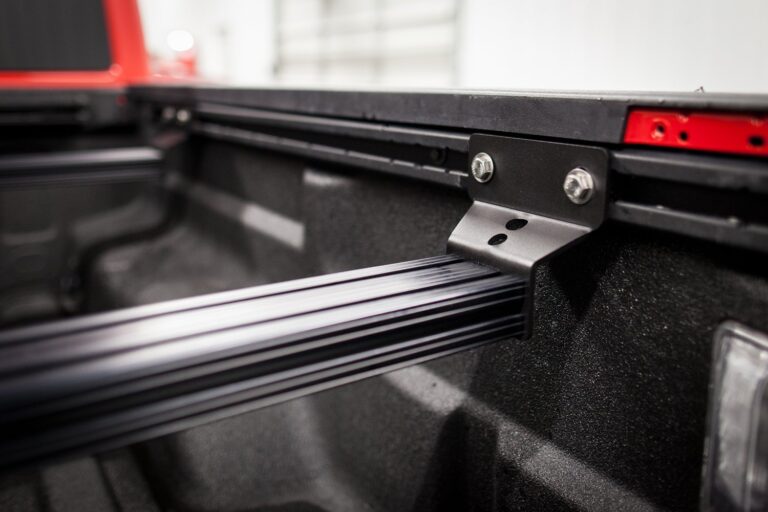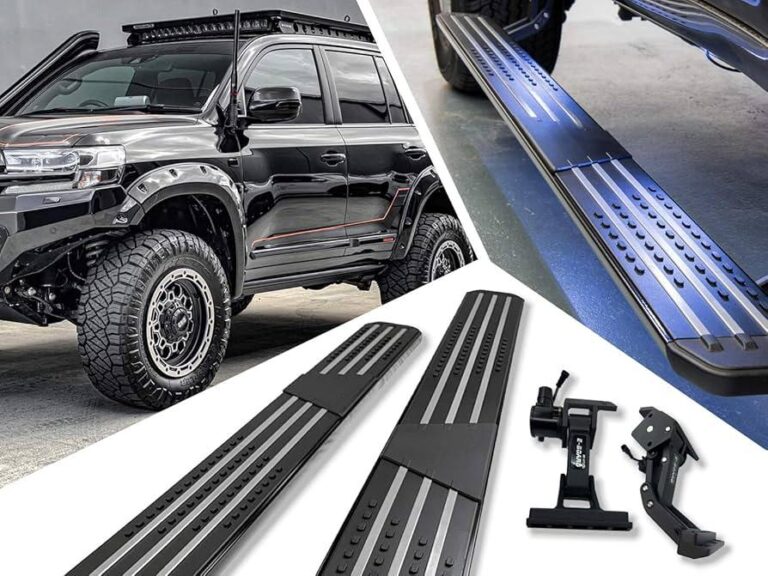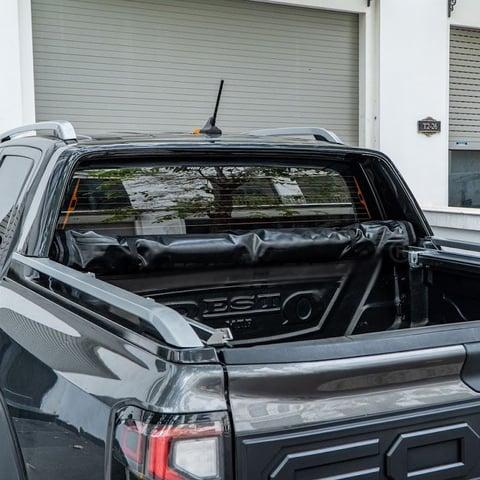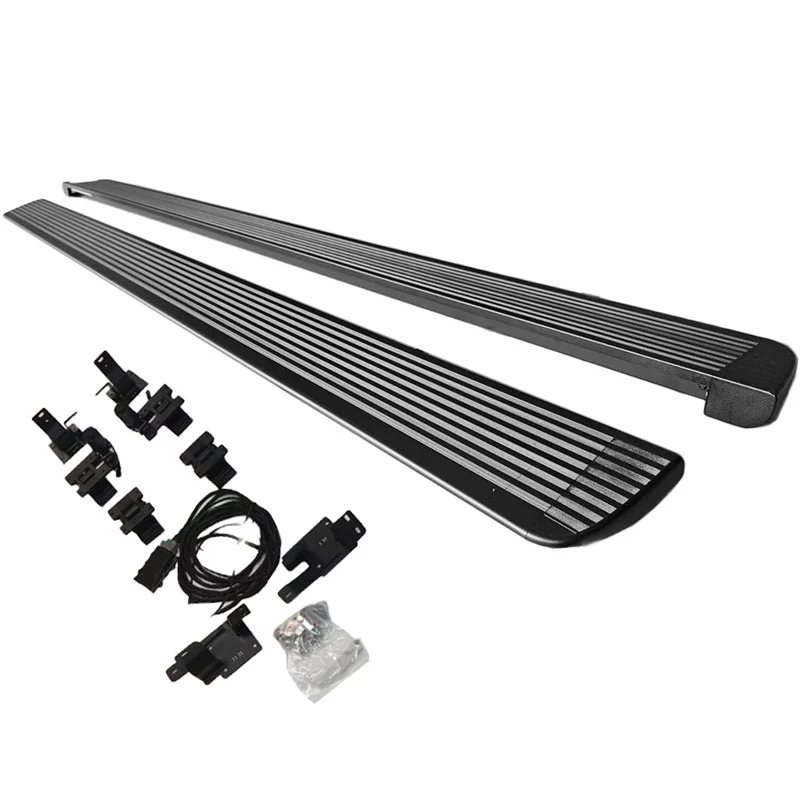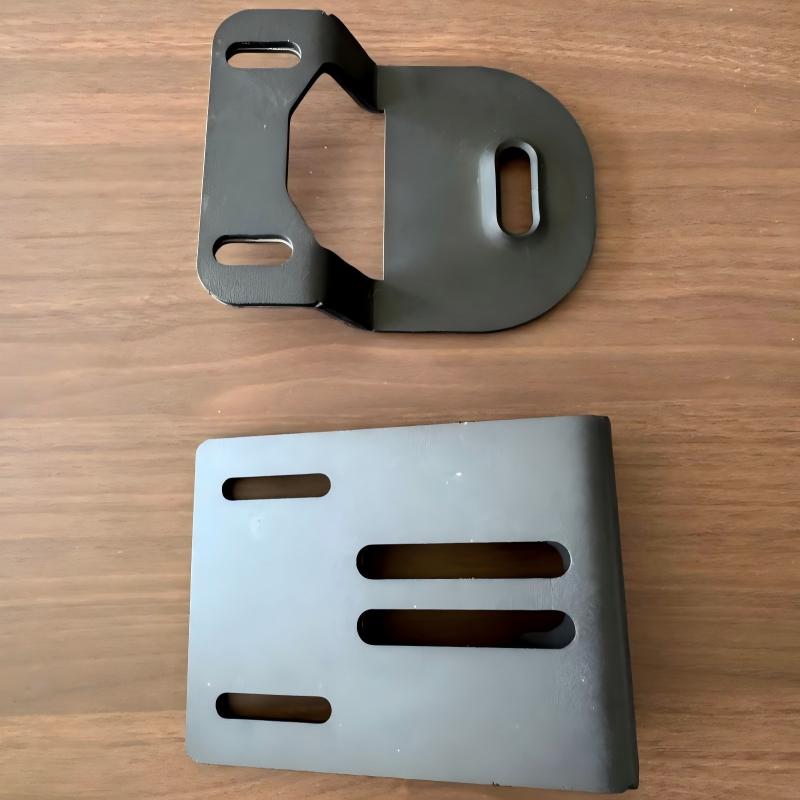-
GaoxinQu, Xingtan, Shunde, Guangdong

Elektrische Trittstufe: Unverzichtbar für die moderne urbane Logistik
Ein Stück rutschfeste Metallplatte gleitet leise heraus, wenn die Autotür geöffnet wird, und löst dreimal täglich das "Kletterproblem" von SUV-Besitzern, schreibt aber leise die Regeln der automobilen Ergonomie neu.
In einer Ära, in der SUVs mit hohem Fahrgestell und Luxusmodelle den Markt dominieren, elektrischer Tritt wird von einem optionalen Zubehör zu einer unverzichtbaren Konfiguration für hochwertige Reisen aufgewertet. Während der traditionelle feste Tritt im Aftermarket immer noch dominiert, wurde das intelligente elektrische System durch eine ausgeklügelte mechanische Struktur nahtlos in das elektronische System des Fahrzeugs integriert.
Diese Art von Gerät fährt automatisch aus, wenn die Tür geöffnet wird, und fährt nach dem Schließen leise unter das Auto zurück, wodurch die Peinlichkeit des "Kletterns" der Passagiere auf einen Sitzplatz beseitigt wird, insbesondere eine sichere Übergangsleiter für Kinder, ältere Menschen und Menschen mit eingeschränkter Mobilität. Die globale Mikro-Logistik-Revolution hat diese Technologie in den kommerziellen Bereich gebracht und zu einem wichtigen Träger für die "letzte Meile"-Zustellung in Städten gemacht.
Neuer Träger für urbane Mikrologistik
Die Einführung des Honda Fastport eQuad Dreirad-Elektro-Tritt-Lkw hat die elektrische Tritttechnologie von Personenkraftwagen auf den Bereich der städtischen Logistik ausgeweitet. Dieses Hybridantriebssystem kombiniert menschliche Pedale mit elektrischer Unterstützungstechnologie, mit einer maximalen Last von bis zu 295 kg, und wurde entwickelt, um das Problem der "letzten Meile"-Zustellung zu lösen.
Die UV-beständige Abdeckung und das vollständig geschlossene Frontdesign gewährleisten den Komfort des Logistikpersonals bei allen Wetterbedingungen. Noch wichtiger ist, dass dieses Modell tief in die digitale FaaS-Plattform (Fleet as a Service) von Honda integriert ist, um Fernüberwachung, intelligentes Batteriemanagement und OTA-Software-Upgrades zu ermöglichen.
Studien in dicht besiedelten Städten wie Sao Paulo, Brasilien, haben gezeigt, dass die Betriebskosten solcher Elektrofahrzeuge mit Pedalen beim Fahren auf Fahrradwegen 40 % niedriger sind als bei herkömmlichen Kraftstofffahrzeugen, was ihre Anwendungsperspektiven in hochdichten Städten auf der ganzen Welt demonstriert.
Kernwerte Komfort und Sicherheit
Luxus-SUVs mit einer Fahrgestellbodenfreiheit von mehr als 210 mm, wie der Range Rover Velar, haben eine ausgezeichnete Passierbarkeit, erschweren aber auch das Ein- und Aussteigen. Das Aufkommen des originalen elektrischen Tritts hat diese Situation komplett verändert:
- Ältere und Kinder: Der elektrische Tritt reduziert die Tritthöhe um bis zu 30 %, wodurch das Ein- und Aussteigen natürlich und einfach wird
- Sicherheit in regnerischen und verschneiten Umgebungen: Das Anti-Rutsch-Texturdesign auf der Oberfläche reduziert das Rutschrisiko um etwa 65 %
- Körperschutz: Reduzieren Sie die Häufigkeit des Kontakts zwischen den Schuhsohlen der Passagiere und der Karosserieschwelle, um Kratzer und Flecken auf der Lederausstattung zu vermeiden
Nach dem Einbau des gleichen elektrischen Tritts wie bei Maybach bestätigte der Besitzer des Mercedes-Benz GLS: "Für ältere Menschen, Kinder und Frauen, wurde der Komfort beim Ein- und Aussteigen um mehr als eine Stufe verbessert." Die automatische Einziehfunktion des Tritts macht die manuellen Bedienschritte überflüssig und macht jedes Ein- und Aussteigen elegant und ruhig.
Technologische Evolution und Luxusintegration
Der elektrische Tritt hat sich von einer einfachen mechanischen Struktur zu einem präzisen bordeigenen mechatronischen System entwickelt. Der Modifikationsfall des Bentley Bentayga demonstriert diese Entwicklung: Der originale elektrische Tritt verwendet eine kundenspezifische Halterung, um sich nahtlos in das Fahrzeugchassis zu integrieren, und kommuniziert über das ECU-Modul mit der elektronischen Architektur des Fahrzeugs.
Im Fall des Mercedes-Benz GLS450, der in den Maybach GLS umgebaut wurde, ist der elektrische Tritt sogar in das bordeigene Display-Steuerungssystem integriert, Benutzer können die Empfindlichkeit der Trittverlängerung über den zentralen Steuerbildschirm einstellen. Diese tiefe Integration stellt sicher, dass der Tritt im eingezogenen Zustand vollständig mit der Seite der Fahrzeugkarosserie abschließt, was weder die Passierbarkeit beeinträchtigt noch die ursprünglichen aerodynamischen Eigenschaften des Fahrzeugs zerstört.
Die Einklemmschutzfunktion wird durch intelligente Sensortechnologie realisiert, und er stoppt automatisch das Einfahren, wenn ein Hindernis erkannt wird, wodurch die Einklemmschutzunfälle vermieden werden, die durch herkömmliche Tritte verursacht werden können. Diese technologischen Innovationen haben den elektrischen Tritt von einem praktischen Funktionszubehör zu einem wichtigen Bestandteil der technologischen Ausstattung von Luxusautos gemacht.
Installationsökologie und Marktschichtung
Der Markt für elektrische Tritte hat ein mehrstufiges Produktsystem gebildet, um die Bedürfnisse verschiedener Konsumentengruppen zu erfüllen:
- Originalsystem der obersten Ebene: Zum Beispiel erfordert das Sondermodell Bentley Bentayga, dass ein professioneller Techniker es in 240 Minuten installiert und über den CAN-Bus der Karosserie kommuniziert
- Kompatible Produkte der Mittelklasse: Das General Motors XT5/XT6 Spezialkit enthält Positionierungswerkzeuge und erfordert die Verwendung von Kobaltbohrern für präzises Bohren von Löchern
- Wirtschaftliche Lösung: Der "1:1-Formöffnungs"-Tritt des Land Rover Defender kostet nur 40 % des Originalmodells, verfügt aber nicht über die Einklemmschutzfunktion
Eine professionelle Installation ist unerlässlich. Der Modifikationsfall des Range Rover Velar zeigt, dass der originale Tritt die Fahrgestellschutzplatte entfernen, eine spezielle Halterung installieren und das Kofferraumsteuerungsmodul anschließen muss. Die Installationsanleitung von GM betont weiter: Die Scharnierbolzen (22 Nm) müssen strikt nach den Drehmomentanforderungen angezogen werden, und es müssen drei Falltests durchgeführt werden, um die mechanische Laufruhe zu gewährleisten. Diese technischen Details stehen in direktem Zusammenhang mit der Sicherheit und Zuverlässigkeit des Tritts bei langfristiger Nutzung.
Herausforderungen und Kostenüberlegungen
Hinter den Vorteilen von elektrischen Tritten stehen mehrere Herausforderungen:
- Preisfaktor: Der originale elektrische Tritt von Land Rover kostet bis zu 20.000 Yuan, was dem 20-fachen der Kosten für feste Tritte entspricht
- Gewichtszunahme: Das XT5-Tritt-Kit fügt 18 kg hinzu, was sich geringfügig auf die Batterielebensdauer des Elektrofahrzeugs auswirkt
- Wartungskomplexität: Motor- oder Sensorfehler erfordern spezielle Diagnosegeräte
Die Haltbarkeit wird in rauen Umgebungen getestet. In Gebieten mit extremen Temperaturen oder hoher Luftfeuchtigkeit können die mechanischen Verbindungen des elektrischen Tritts aufgrund von Metallermüdung ungewöhnliche Geräusche verursachen, und elektronische Komponenten sind in Watabschnitten kurzschlussgefährdet. Die Korrosion durch schmelzendes Streusalz beim Fahren auf Schnee erfordert, dass der Tritt aus Aluminiumlegierung in Luftfahrtqualität und mit spezieller Oberflächenbehandlung hergestellt wird. Diese Faktoren haben gemeinsam die Herstellungskosten in die Höhe getrieben.
Zukünftige Trends und grenzüberschreitende Anwendungen
Die elektrische Tritttechnologie dringt in mehrere Szenarien ein. Der von Yamaha in Brasilien auf den Markt gebrachte Elektroroller E01 demonstriert eine abgewandelte Anwendung dieser Technologie. Sein festes Lithiumbatterie-Design senkt den Schwerpunkt und verbessert die Fahrstabilität. Innovationen im kommerziellen Bereich sind radikaler: Honda Fastport eQuad verwendet ein modulares Frachtbox-Design, um es demselben elektrischen Trittchassis zu ermöglichen, sich an eine Vielzahl von städtischen Logistikszenarien wie Expresszustellung, Kühlkette und sogar mobilen Einzelhandel anzupassen.
Mit dem Fortschritt der Materialwissenschaft werden Kohlefaserverbundwerkstoffe zunehmend in High-End-Trittkomponenten eingesetzt, wodurch das Gewicht um 40 % reduziert und gleichzeitig die Tragfähigkeit gewährleistet wird. Bentley-Tuner prognostizieren: "Die nächste Generation von Tritten wird biometrische Sensoren integrieren, im Voraus starten, wenn sich der Besitzer nähert, und den Rhythmus des Einsatzes basierend auf den Gewohnheiten des Benutzers lernen und optimieren."
Diese Innovationen und Hondas nachhaltige urbane Logistiklösungen weisen auf eine Zukunft hin: elektrische Tritte werden zu intelligenten Schnittstellen, die Menschen und Fahrzeuge verbinden, anstatt einfache Metallfußstützen.
Die technologische Entwicklung von elektrischen Tritten ist wie ein Mikrokosmos der Welle der automobilen Intelligenz. Vom Mercedes-Benz GLS bis zu den Honda-Logistikfahrzeugen, hat diese Technologie eine vollständige Abdeckung von Luxuspassagieren bis hin zur städtischen Logistik gebildet.
Kuriere in Sao Paulo, Brasilien, fahren mit eQuads durch den Verkehr, und Geschäftsleute in Lujiazui, Shanghai, steigen leicht auf Bentley-Tritte und steigen elegant aus - Benutzer aus verschiedenen Kontinenten teilen die Gelassenheit, die durch die gleiche Technologie entsteht.
Wenn 20 % der SUV-Besitzer elektrische Trittbretter als unverzichtbare Konfiguration auflisten, hat sich diese intelligente verschiebbare Metallplatte von einer praktischen Einrichtung zu einer Sicherheitsnotwendigkeit entwickelt. Der Code für den zukünftigen städtischen Verkehr könnte in dem leisen mechanischen Schiebegeräusch verborgen sein, das jedes Mal ertönt, wenn die Autotür geöffnet wird.

